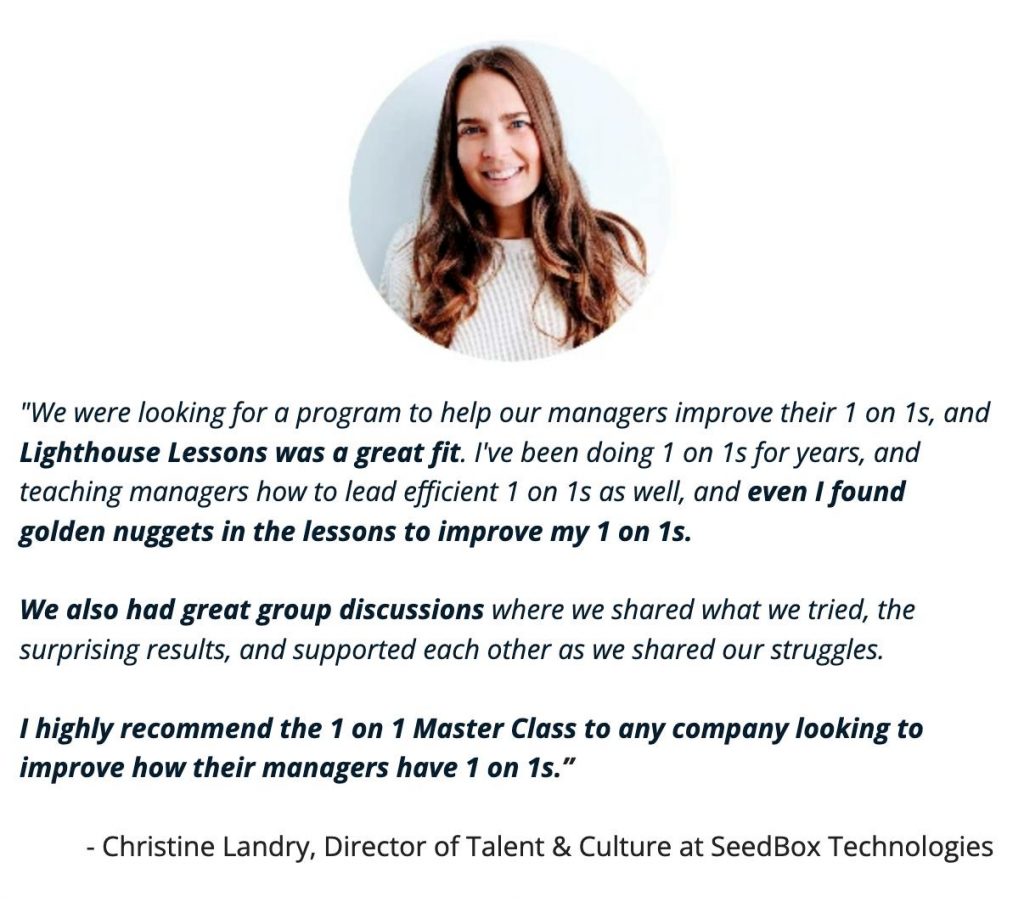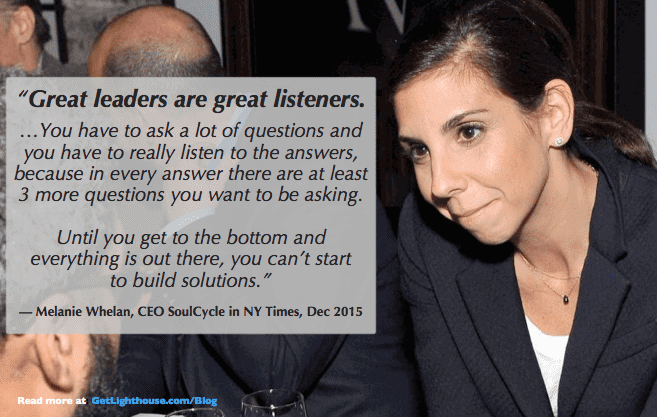One on one meetings, 1:1s, 1 2 1s, one on ones, or 1 on 1s. Whatever you call them, they're one of the most powerful tools you have as a manager.
Many managers have one on one meetings with their teams, but too often, they waste them. Status updates, awkward silences, and frequent cancellations are just a few of the symptoms of ineffective one on ones.
Why does this happen?
It usually comes down to your fundamentals, something a good template can help solve.
A lack of a good 1:1 meeting template, or structure, prevents many managers from making the most of their one on one meetings.
Without taking the right steps before, during, and after each meeting, it's easy to feel like you're not getting enough value from your one on ones.
Learn how the best leaders run their one on one meetings
Many of the best leaders in business swear by one on one meetings:
- Ben Horowitz considers one on ones so important, he was willing to fire a senior leader for not having regular one on one meetings, which he detailed in his book, The Hard Thing About Hard Things.
- Andy Grove, former CEO of Intel, devotes an entire section in his classic leadership book, High Output Management, to 1 on 1s.
- Serial entrepreneur, SaaStr founder, and investor Jason Lemkin says one on ones are the "#1 management hack”: "There isn't a better investment you can make in your VPs than meeting either once a week, or at least, once every 2 weeks.”
These and other leaders are passionate about one on ones because of the value they get from them. And you get that value by following a set structure or template that helps you make the most of each meeting.
Below, we break down the ultimate template for one on one meetings with employees, the secret weapon of great leaders who have motivated and engaged teams.
This template can help you whether you're just starting out, or looking to tune up your meetings if you're a seasoned leader.
Get Your Copy of the 1:1 Meeting Template now:
How to use this one on one meeting template: Whether you're a veteran, or it's your first one on one with an employee, there's something for everyone.
Table of Contents:
Jump to whatever section you're interested in or need help with by clicking the table of contents links below.
- Part 1: The benefits of one on one meetings
- Part 2: Using the ultimate one on one meeting template
- Step 1, Before the Meeting: How to prepare for one on one meetings like a pro
- Step 2, During the Meeting: What to do in your one on one meetings
- Step 3, After the Meeting: Bridging the divide to the next one on one meeting
- Part 3: Advanced skills for your one on one meetings
Add some of these approaches to your one on one meetings and see how they work for you. Be sure to also check out the links throughout this guide for further reading to learn more about the research and leaders behind these tactics.
Part 1: The benefit of one on one meetings (Or: Why 1 on 1s matter)
Before we get into the nuts and bolts of good one on ones, it's worth quickly reviewing the benefit of one on ones.
It's unfortunately rare for people to have good 1 on 1s regularly, so let's talk about what that value really is when they're done well.
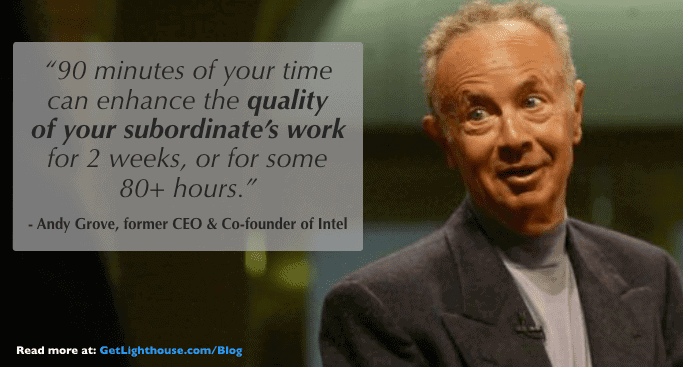
1) The real value of one on ones for managers
One on ones are the single most valuable tool managers have in their tool belt to fix all kinds of problems and gain invaluable insights. However, if you've never had a great one on one, you may be pretty skeptical about starting them with your team.
Following our one on one meeting template (you can download it here) can help change that so you have effective one on ones, too. When you do them the best way, you can experience all of these benefits:
- Better engagement, productivity, and reduced turnover: Yes, that's right. All of those positives have happened for companies like Microsoft, Adobe, and Deloitte, as well as multi-company studies by Gallup, Hogan Assessments, and Dale Carnegie. If you want to see the data for yourself, we have a whole post dedicated to the quantified value of 1 on 1s here.
- People leave managers, not companies: If you have a great boss, they can make work awesome, even when the company otherwise is struggling. However, even at great companies, a terrible boss will leave you running for the door. One on one meetings are one of the most important habits great managers have that helps them retain their teams.
- Fix low morale issues fast: When your team has low morale, it's easy to start losing people left and right. One of the most effective ways we've seen managers turn things around is through very specific one on one approaches we discuss here.
Over and over since we started Lighthouse over 10 years ago, we've seen managers learn quickly just how much of an impact these meetings can have for them. It takes less time than you think and saves you a lot of headaches later (like hiring a replacement).
^Return to Table of Contents

2) The value of one on ones to organizations
One on one meetings are valuable to organizations in addition to individual leaders. With the right approaches, common goals of companies as a whole can be accomplished through quality 1 on 1s. Here are 5 great examples:
- Be more successful at promoting from within: It's great to have a culture that rewards the loyalty and hard work of your people. One of the best ways to do so is to promote from within where possible. However, for this to succeed, senior leaders need to be investing in coaching their rising leaders, which is best done in one on ones.
- Fix the mess left from a failed flat organization: Many leaders hope to stay flat forever. Unfortunately, that fails as you scale (typically around 25 employees). One of the best ways to address the issue is to make sure the new leaders you have to promote to fix a flat org meet with everyone on their teams to hear their issues and frustrations.
- Improve or replace your performance reviews: Performance reviews have taken a lot of heat over the last few years, and with good reason: they're time-consuming and often lacking value. Companies like GE, Adobe, and Deloitte got rid of their performance reviews and replaced them with 1 on 1s. Others found that it's the act of having 1 on 1s that improved their reviews. Either way, 1 on 1s are key to organizational performance.
- Replace failed real-time feedback: It sounds like a great idea. Get everyone more feedback through a real-time feedback tool. Then no one uses it, and no one is getting any feedback or coaching. One on ones are a much better way to deliver feedback more often than an annual review.
- Transition to Managing Remote Employees: The shift to remote and hybrid work has, required us all to learn new management skills to work well. 1 on 1s are an essential way to fill in communication gaps for remote workers and to help ensure they have everything they need to thrive.
^Return to Table of Contents

3) Problems one on one meetings help you overcome
One on ones are surprisingly versatile. With the right approaches, they can act as a Swiss army knife for a variety of challenges leaders of all types face, including these:
- A failed open-door policy: You may think because "my door is always open" that you'll hear everything you need to from your team, but that rarely works. Your team may be afraid you're busy, don’t know if your there,, or literally can't see your door (because they're elsewhere or remote). One on one meetings ensure you have a clear time to discuss problems, needs, and get the pulse of your team.
- Disconnect with remote staff: When your team isn't in the same office as you, management is even harder; you miss out on many opportunities for ad hoc conversations. Whether you're dealing with a hybrid/partially remote or fully remote team, one on ones are essential to having key conversations and fixing problems.
- Turn around underperformers: Turning around people checked out or underperforming takes work. They do not magically get better. One on ones are a great way to roll up your sleeves and make sure you give them the attention needed to improve their performance or manage them out of the organization with proof to HR you really tried.
- As you can see, one on one meetings have a lot more benefits than you may have thought. Now, let’s take a look at how so many leaders get great value from these meetings.
As you can see, one on one meetings have a lot more benefits than you may have thought. Now, let’s take a look at how so many leaders get great value from these meetings.
^Return to Table of Contents
Part 2: The Ultimate One on One Meeting Template
By following the structure and tips we're about to talk about, you can make the most of your one on one meetings with your team.
Whether you're starting them for the first time, starting over after having given up on them, or looking to improve the one on one meetings you have, this template can help you improve the quality and outcomes of your meetings.
Get Your Copy of the 1 on 1 Meeting Template now:

Step 1 - Prepare: How to plan your 1 on 1s
The first step in the one on one meeting template the best leaders use begins before the meeting even happens; it's all about planning for your success.
To be successful, there are a handful of key things you should do when planning your one on one meetings. Any of these can trip you up, so take a moment to think about what works best for your situation:
1) Choose the right frequency for each person on your team.
Everyone on your team needs and deserves to have a one on one meeting with the person they report to. This includes new staff, veteran staff, managers, and interns. The topics you discuss may change, but setting aside time for each team member is crucial.
While in an ideal world, you would meet weekly or biweekly with everyone on your team, travel, team size, and other demands on your schedule can make that difficult. So instead of a one-size-fits-none approach, use these as guideposts to determine how often to meet with each person in your 1-on-1s:
- Size of your team: If you manage more than 5 people, it can be hard to have one on one meetings with everyone, every week. The larger your team, the less frequently you may be able to meet, but realize there will be more ground to cover each time, so budget accordingly (i.e.- schedule an hour).
- Their Task Relevant Maturity: This is the most important factor. If someone is new in a role or has a new responsibility, they need more help, coaching, and guidance. Make time to meet with those on your team that are newly hired, recently promoted, or placed in a new role, every week or two ideally, even if everyone else has monthly one on one meetings. Change the frequency for each person as their roles and comfort-levels change.
- Your Task Relevant Maturity: If you have never done a role that is now reporting to you, you need to be more hands-on, too. This gives you a chance to better understand what they do, drivers for success, and get comfortable with their work. In this case, in particular, you should bring a lot of questions to the meetings so they can teach you a few things.
- Your Schedule: If you travel a lot, are in tons of other meetings, or have other responsibilities making scheduling hard, look to meet for longer periods of time when you do meet. You should, at a minimum, be meeting with everyone once a month (once a quarter is pointless). Otherwise, you may get blindsided by a departure or a problem that grew too big.
^Return to Table of Contents

2) Get the logistics right: meeting length, location, scheduling.
Once you settle on how often to meet initially with each person on your team, you need to get the logistics in order. Here are a few tips to get those right:
- Meeting Length: 1 hour. These meetings are more than a "quick check-in." If you really want to get the full value out of one on one meetings you need time to dig into topics. This is why Andy Grove wrote the quote above about zingers. Set aside an hour. You can always end early, which is much easier than trying to stay when you have another meeting you're getting notifications for drawing your attention.
- Reschedule. Don't cancel. It can be tempting to cancel for a number of reasons, but that does more harm than good. Your team member may say canceling is okay, but that's often more of a power dynamic than them wanting to cancel. Show your team you value the time by instead rescheduling to a new time soon.
- Go somewhere private. They're called one on one meetings, not group meetings. If you want to dig into some of the stickier issues that come up at work, they need to be private. Heading to a conference room away from your desks, going for a walk, visiting a coffee shop, or getting lunch together are all viable options. If you're managing someone remote, then making sure you're in a private area for the call helps a lot, too.
^Return to Table of Contents
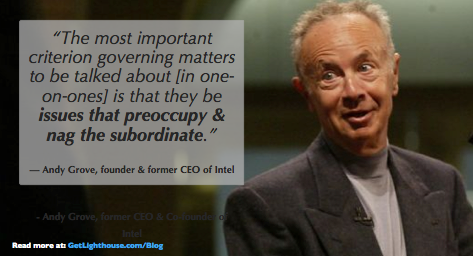
3) Tell your team about your new one on one meeting plan.
One on one meetings are focused on your team, so clearly you should explain this to them. Otherwise, they'll think they're in trouble, or just be nervous of what the reason is for the meeting.
You want them to be excited about the meeting, not discouraged, or afraid. You may not realize how intimidating meeting with you may be for some people on your team.
The best way to relieve any concerns is to be clear with them what your goals are for the one on one meeting and how it will work. You can accomplish that with these tactics:
- Tell them what to expect in one on ones: If you make it clear that it's a meeting for them to talk about what's on their mind, give them coaching, share feedback both ways, talk about their career development, etc, it will remove any doubt about the purpose of the meeting. If you want a simple email you can use, try something like this:
Hi [Name],
I'm going to start doing one on ones with you and other members of the team. This is to get more feedback from you as well as give you a place we can talk about anything that's bothering you, your career development, and more.
To start, we'll have the first one on [Date] at [Time]. We can then talk about a time that we can stick to regularly afterwards.
If you want to learn more about what to expect, this post can help you: https://getlighthouse.com/blog/one-on-ones-employee-know/
If you have any questions, please let me know.
Thanks,
[Your Name]
- Set a recurring meeting on both your calendars: It's important to build a rhythm with your one on ones; part of the benefit is the knowledge that there will be a time soon to meet again. This allows you both to be accountable to what you discussed last time (as you'll be checking progress on it), and help you both plan when you'll have a chance to talk privately about any issues since the last meeting.
- Avoid Status Updates: It can be tempting to spend a bunch of your one on one meeting time talking about projects, but that's a huge waste. Get your project updates another way, so you have time for the right topics for your one on one meetings like their careers, praise, coaching & feedback, and issues pre-occupying them.
If you start your one on one meetings off with good fundamentals, it will be much easier to build momentum quickly with your team. By following the above tips, you and your team members can be confident heading into them.
In case you want to master leading one-on-one meetings at a high level, check out our 1 on 1 Master Class. This course offers a comprehensive guide to making your one-on-ones a management superpower.
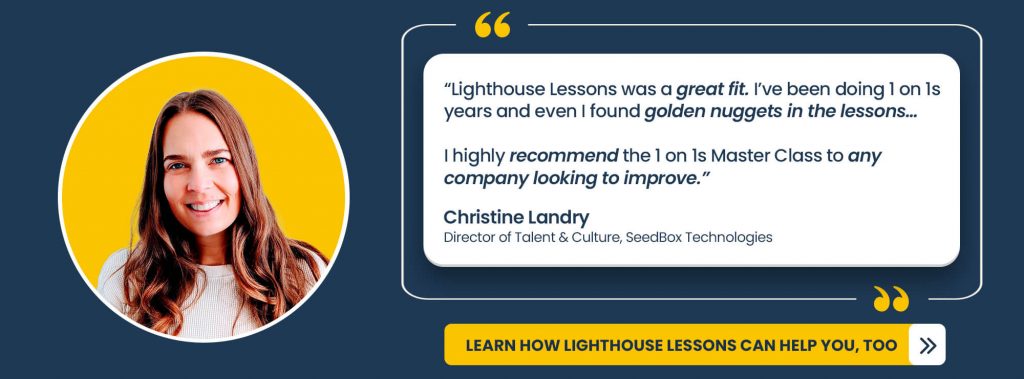
^Return to Table of Contents
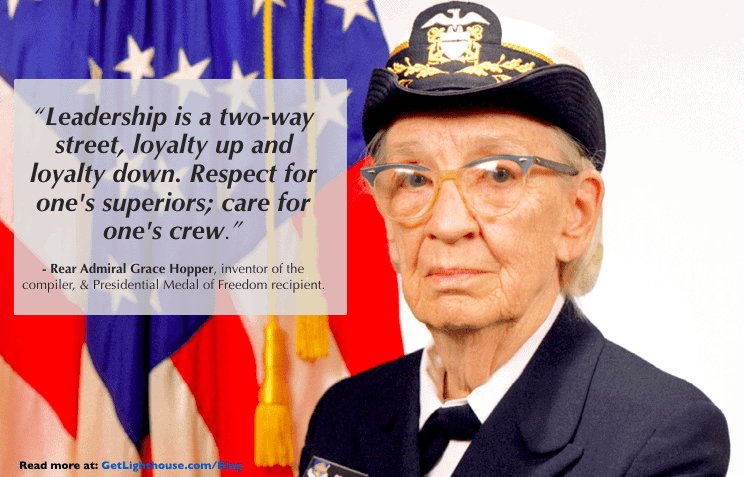
Step 2 - During the Meeting: What to do in your one on one meetings
Now that you know how to set the stage for success before your one on one meetings, let's talk about the second step to a successful one on one: making the most of the time you're sitting down with each person on your team.
Here are a few ideas for the first meeting, and how to keep those meetings fresh for many meetings to come.
1) Bring great one on one meeting questions to break the ice and create psychological safety
The first one on one meeting will be a little awkward with each person on your team, especially if you haven't built a lot of rapport with them yet.
Talking to an almost stranger who is your boss can be both intimidating, and filled with uncertainty; it's hard to tell how candid you can really be without first building a foundation of rapport, trust, and psychological safety.
You have to push past this discomfort. Show you care about them and are interested in what they have to say by approaching your one on one meetings this way:
- Bring some good one on one questions to ask: Since the one on one meeting is for your team member, asking questions is one of the single best ways to bring the focus to them. If you're looking for where to begin, any of these are good starting points:
- 100+ Questions to Ask in One on Ones: These are good for anyone, but especially individual contributors that may have more helpful insights from the front lines than you realize. Examples:
- What work are you doing here that you feel is most in line with your long term goals?
- Do you feel like you're making progress on your big goals here? Why or why not?
- How do you prefer to receive feedback?
- How can I better support you?
- What is the company not doing today that we should do to better compete in the market?
- 102 Ways to Build Rapport with anyone you work with: If you feel like you really don't know them well, these questions can help you get to know each other, build trust, and show you care about them as more than an employee. Examples:
- What do you like to do in your free time?
- What did you do for fun in the past that you haven't had as much time for lately?
- What's your favorite podcast or show you've been following lately?
- What's one thing we could change about work for you that would improve your personal life?
- What drives you? What motivates you to come to work each day?
- 96 Questions to Ask Managers in One on Ones: Your managers need one on one meetings too, and these questions help you specifically support them better. Examples:
- What's one thing we could do for you to help improve the performance of your team?
- Who do you think is at risk of leaving the company? How could we save them?
- What's one thing I could do to better support you?
- What has come up in your one on ones lately that I should know about, or you'd like help with?
- 66 Questions to Ask in Skip Level One on ones: For the advanced players, skip level one on ones are a meeting where you meet with those that report to your direct reports. These questions can help you uncover key ways to coach your managers reporting to you, and get insights from the front lines. Examples:
- When was the last time you had a conversation with your manager about your career? How did it go?
- What is a recent situation you feel like your manager did a great job?
- What's one thing your team should stop doing? Why that?
- 45 Questions to Ask Remote Employees to Better Support Them: Full-time remote work is becoming increasingly common. Remote employees face unique challenges that many managers aren't even aware of. These questions will help you build rapport with your remote employees and better support them in working through those challenges. Examples:
- What's your favorite part about working remotely? (Understand what drives them)
- Have you been surprised by any news announced at an all hands? What was it?
- How well do you feel you know your coworkers?
- 100+ Questions to Ask in One on Ones: These are good for anyone, but especially individual contributors that may have more helpful insights from the front lines than you realize. Examples:
- Ask follow up questions: As the CEO of SoulCycle, Melanie Whelan, said in a NY Times interview (and pictured above), your work isn't done when you ask a question. Ask follow up questions (especially using What & How) so you fully understand their answers. You may be surprised what you discover by going beyond a first answer, and your team will appreciate you are paying attention enough to ask followups.
- Assume positive intent: It's easy to jump to conclusions when you hear about a problem. If you don't have rapport with someone you can easily think a mistake was intentional or malicious. Indra Nooyi, CEO of Pepsi, puts it best what happens when you do the opposite:
- "Whatever anyone says or does, assume positive intent. You will be amazed at how your whole approach to a person or problem becomes very different...You will be amazed. Your emotional (intelligence) quotient goes up… You do not get defensive… You are trying to understand and listen….when you assume positive intent, the other person says, ‘Hey, wait a minute, maybe I'm wrong reacting the way I do because this person is really making an effort'.”
When you come to the meeting with the right mindset and a few good questions, you help your one on ones push past the awkward and into the healthy and productive.
Just like Nooyi's lesson on assuming positive intent, after a few 1 on 1 meetings, you'll be amazed how good they can be. The discussions your questions have sparked, and the shift in both of your attitudes to each other will have you feeling totally different about 1 on 1s.
^Return to Table of Contents
2) Have a variety of other good topics for discussion.
Asking good one on one meeting questions is a key part of your one on ones, but don't make the mistake of falling into a rut by asking the same things every time.
There's so much you can, and should, cover in these meetings that have no other time to be discussed. If you've ever gotten to the end of a year, or to the next review cycle, and realized there was something you haven't discussed since last review/employee performance evaluation, you know exactly what we're talking about:
- Build a foundation of rapport: Do you open up to strangers? Probably not. You need to get to know and trust someone before you do. It's no different for your team, which is why it's so important to start by building rapport with your team, or as it's also called, psychological safety.
- Talk about their career development: Over and over again we see studies that show people want more career development at work, especially Millennials and Gen Z. Yet, most companies fail to deliver on it and are then surprised why they lose good people. Managers that help their people grow, retain their best people for the long haul. Your one on one meetings are a great time to help people discover their goals, check in on their career progress, and discuss ways to grow even when you can't promote them.
- Give them feedback and coaching: As the trend grGive them feedback and coaching: The fact is employees want more frequent feedback than once or twice a year. There are many ways to give feedback. The key is to take the time to give it. Your one on ones are the perfect time to go over how they can improve, and remove the fear of communication that exists for many managers.
- Get feedback: Feedback should be a two-way street. This means taking the time to ask your team good questions and really listening to their answers. They'll help you get buy-in for big changes, gather support for a new idea, learn how you can improve, and more.
- Give them specific praise: As Mary Kay Ash, founder of the Mary Kay Cosmetics empire, knows well, praising your people is a huge motivator. The key is to be specific about what you liked and to give the praise regularly. Studies show it boosts morale, motivation, output, and reduces turnover. Once again, your one on one meetings give you a great time to mention something they recently did that was awesome. Give praise, and watch them smile.
Making time to cover all these topics will open up a whole new world for you as a manager. Your self-awareness will improve and you'll catch and fix problems earlier as your team will trust coming to you. One on one meetings are the embodiment of the old adage, "an ounce of prevention is worth a pound of cure."
Want one place to store all of this information that can make your 1:1s amazing? Get our free 1:1 meeting template below.
^Return to Table of Contents
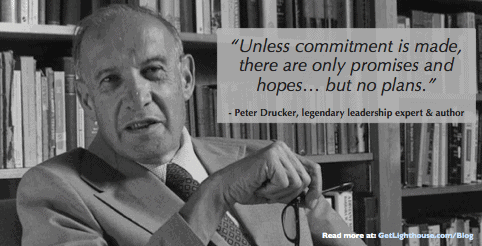
3) Demonstrate your commitment to them with your actions and create accountability for both of you.
All these conversation topics are helpful in your one on one meetings and your relationship with each team member. They will appreciate you cared to ask and listened intently. However, it quickly becomes hollow if nothing changes.
You have to take action on what you talked about, and help them feel and make progress. Fortunately, a few simple habits can help ensure this happens:
- Take notes! Yes, it's their meeting, but it's your job to take notes. You need to remember what they told you that's important to them. As Andy Grove wrote, "Equally important is what "writing it down” symbolizes…the act implies a commitment, like a handshake, that something will be done.” If you're uncertain the best way to take notes, here are a few approaches to try (the last 5 Minutes Method is my favorite).
- Ask one more question: In addition to worrying about zingers, the other thing you need to do as a manager is to make sure you've fully explored a topic. Don't be afraid to ask one more question when your team member is done talking about a topic. It can help ensure you don't miss anything and get to the root cause. This helps you avoid costly management debt.
- Establish the next steps and email them after the meeting: While you're writing down notes, it's important to also establish what you can both do to make progress on what you discussed. This prevents you from talking about the same thing every meeting with no progress. If your team sees that when you talk about something, you also do something about it, they know it's worth it to bring up issues. Research shows that emailing those next steps afterward helps ensure they get done and is key to turning around your underperforming employees.
By practicing a few key habits in your one on one meetings, you can make them extremely productive and effective.
When you cover the right topics and ensure progress is made together on those discussions, you'll see the tremendous value in these meetings. Most importantly, you'll see a strong boost in the morale and motivation of your team.
^Return to Table of Contents

Step 3 - After the Meeting: What to do from now until your next one on one meeting
The last and final step in our one on one meeting template is something often missed by managers: what you do after the meeting is over (and before the next one).
If you've started your one on one meetings with the right fundamentals, and are building good habits when in the meeting, the last thing you need to do is bridge the divide between meetings.
What you do between meetings makes all the difference in whether your one on ones get better or worse over time. When you cover the same issues over and over again, and nothing changes, or you forget altogether what happened last time, resentment will build on your team.
That resentment then leads to them shutting down in their one on ones. They no longer trust coming to you with anything or see the point in answering your questions because nothing ever comes from it. It won't be long before you stop hearing about problems altogether... until it's too late and you get blindsided by an employee turnover wave.
To keep your one on one meetings from becoming ineffective, here's what to do instead.
1) Next time for you (the manager): Build a rhythm and remember
People may listen to what you say, but even more important, they watch what you do. The best conversation in a one on one meeting will ring hollow if there's no follow-through after.
Meanwhile, when you do your part to be ready for the next one on one meeting, you'll see how your team appreciates the progress they feel. It will make your one on ones more and more comfortable and high quality.
Doing this is actually quite easy. Here's what to do:
- Keep your promises: Whatever actions came out of the last meeting, you need to do your best to take care of them by the next meeting or have a reasonable explanation of why you couldn't do it. As Ed Catmull, cofounder of Pixar, wrote (and quoted above) they learned that the actions of leaders was what mattered most to maintaining a great culture as they grew.
- Review your notes: Anything a team member tells you in their one on one is important to them. This is why taking notes and clearly setting action items is so important. To close the loop and build a rhythm between meetings, you should review your notes. This also avoids the awkward moment of sitting down in the meeting and asking, "what did we talk about last time?" which is sure to be a downer for that team member to hear and wastes precious time.
- Prepare some topics: As we've shown you above, there are many great things you can discuss in your one on one meetings. However, they all require some effort on your part. A little preparation to pick out a few questions to ask, or consider an area you can provide feedback or praise, can make all the difference in the quality of your meeting.
^Return to Table of Contents
2) Next time for them (the employee): Get them involved and hold them accountable as well
The work to make one on ones great is not all on you. One on one meetings are your team member's meeting after all.
Your team is responsible just like you for actions between meetings. The good news is, this action represents essential progress for them, which research by Stanford Ph.D. Teresa Amabile (pictured above) has found is essential to motivation and happiness at work.
Here's how they can be a part of building a rhythm and positive momentum in your one on one meetings:
- Prepare an agenda: Once you both have a recurring event on your calendars for your one on one, they know the next time you'll be meeting. Ask them to bring topics they want to discuss. When you put in so much effort to the meeting, it's fair to ask them to put some thought in advance as well, so you spend the time on the most important things to them.
- Hold them accountable: Whether you're setting new goals for them to progress on, or the next steps from your discussion last time, it's important they keep their promises, too. Close the loop by checking in on what were next steps last time at the start of the next meeting. This ensures progress happens and takes advantage of the power of repetition. This is especially helpful and important when you're working to improve a disengaged or underperforming team member.
^Return to Table of Contents
Part 3: One on one meeting tips for Advanced Leaders
We've covered a lot in this post already. For those of you already familiar with the fundamentals, these last two sections cover the common pitfalls you may have to coach others out of, as well as some advanced tactics that can take your org from good to great.

1) What great leaders *don't* do:
There's a lot of bad advice on the internet, especially for 1 on 1s. I've seen one on one meeting templates elsewhere that make me weep for the poor employees subjected to them.
While we don't have time to cover all the sins (see here for a detailed breakdown of 11 worst advice for one on ones), the most common issues we hear over and over again are:
- The 10/10/10 rule is terrible: Quick! You have 10 minutes to cover everything important to you for the last 2-4 weeks. Squeeze in a request for a raise, a question about a project, and help on a situation that came up last week. Also, your manager is going to come a few minutes late, so it's really 8 minutes. Sorry! The 10/10/10 rule is misguided because it tries to force an expansive discussion into a ridiculous time frame.
- Group 1 on 1s fundamentally fail: It's called a 1 on 1. Not 2 or 3 on 1. Bringing someone else into the meeting completely changes the dynamic. If it's your boss, now it's the most intimidating meeting ever for the employee. If it's HR, then the person probably assumes they're being fired. Group 1 on 1s removes the rapport and trust that the 1 on 1 is meant to bring between two people.
^Return to Table of Contents

2) Pro moves of great leaders in their one on one meetings
Once you understand the value of one on ones, there's so much you can do with them. They go well beyond a few good topics of discussion and meeting with your direct reports.
Here's how great leaders take their powers to the next level:
- Skip level meeting: Once you start managing managers, you start disconnecting from the front lines of your organization. Skip level one on ones are a great way to get in touch with your team on the front lines, and get feedback on your managers so you can better coach them.
- Peer one on ones: Another way to expand and improve the quality of your communication in your organization is to meet with peers and other colleagues that don't report to you. This can improve how cross-functional teams work, reduce tensions, and build stronger relationships with key stakeholders. If you're a product manager, they can be particularly transformative (here's more for PMs specifically).
- Practice to be a more effective listener: Listening and asking good questions is a skill like any other. For leaders to succeed over the long term, it's a skill that needs to be mastered. Also, remember that introverts may not always open up in a group setting. That makes one on ones often the best way to get the maximum insights from your team. This takes practice, which regularly scheduled one on ones ensure you have time for.
^Return to Table of Contents

3) How to use one on ones to help your team thrive in difficult times
Becoming a better listener is important, but it becomes absolutely critical in times of crisis. It's one of the single best ways to support your team especially when things are tough.
Instead, double down your efforts. Focus on the issue to find out how your team is feeling individually and then take steps to help them manage those feelings as well as find some positive direction together.
That includes asking questions like:
- "Taking the temperature” and acknowledging the elephants in the room with a question like, "What are your biggest worries or concerns right now?”
- Addressing their questions & concerns with a question like, "What can I do to help you feel more confident or comfortable right now?”
- Shifting their mindset with a question like, "When do you feel most productive and motivated when working?”
- Reminding them of their purpose & value with a question like, "Do you understand why your work is important? If yes, how would you describe it?”
- Involve them in creating solutions with a question like, "How do you think we could get more of the right things done despite our current situation?”
- Ensure progress happens together with, "What can we both do before we meet again to make progress on what we discussed today?”
During a crisis, it's the bonds we have that help us stay strong. As a leader, you have the opportunity to show them that you care and help them find a sense of perspective that allows them to push on in the face of adversity.
To learn more about leading in times of uncertainty, read: Crisis Leadership: 29 Questions to Ask Your Team to Thrive in Difficult Times
Are you and your managers wasting their 1 on 1s?
As you’ve learned today, there is no greater investment to make in your team than having 1 on 1s. Yet, done poorly they’re a huge waste of time.
That’s why we made the 1 on 1 Master Class. You and your fellow managers learn step by step how to supercharge these meetings to motivate your teams, fix problems, coach your people, and much more.
You can learn how Lighthouse Lessons can help your leaders like we helped SeedBox Technologies by signing up here.
